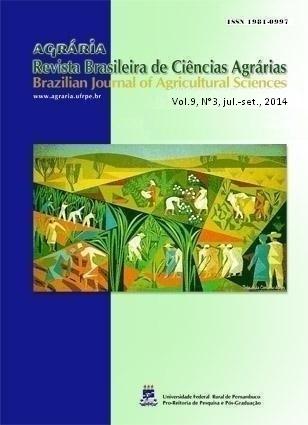Metabolizable energy value of corn glucose hydrated for broiler chicks
DOI:
https://doi.org/10.5039/agraria.v9i3a4029Keywords:
chicken, carbohydrate, metabolism, metabolizabilityAbstract
The objective of this research was to determine the metabolism of corn glucose and diets containing glucose for broilers from 1 to 7 days of age by total excreta collection method. Therefore, was carried out metabolism trial using 360 male broilers in the lineage Cobb500 1-7 days old. The animals were housed in metabolic cages in a completely randomized design with five treatments and six replicates of 12 birds. The treatments consisted of the basal diet and four test diets with different levels of substitution of basal diet for corn glucose (0, 5, 10, 15 and 20%). Data were subjected to analysis of variance and regression and applied Dunnett’s test at 5% probability. The glucose contained in its composition 81.39% dry matter and 3824 kcal kg-1 gross energy. Significant effects for the energy values of corn, and CAMDM CAMGE of diets containing different levels of substitution of glucose. The level of 20% of the diet by replacing glucose showed the highest energy value being 3550, 3648 kcal kg-1 DM and 95.38% for AME, AMEn and CMAEB respectively.
Downloads
Downloads
Published
How to Cite
Issue
Section
License

This work is licensed under a Creative Commons Attribution-NonCommercial 3.0 Unported License.


